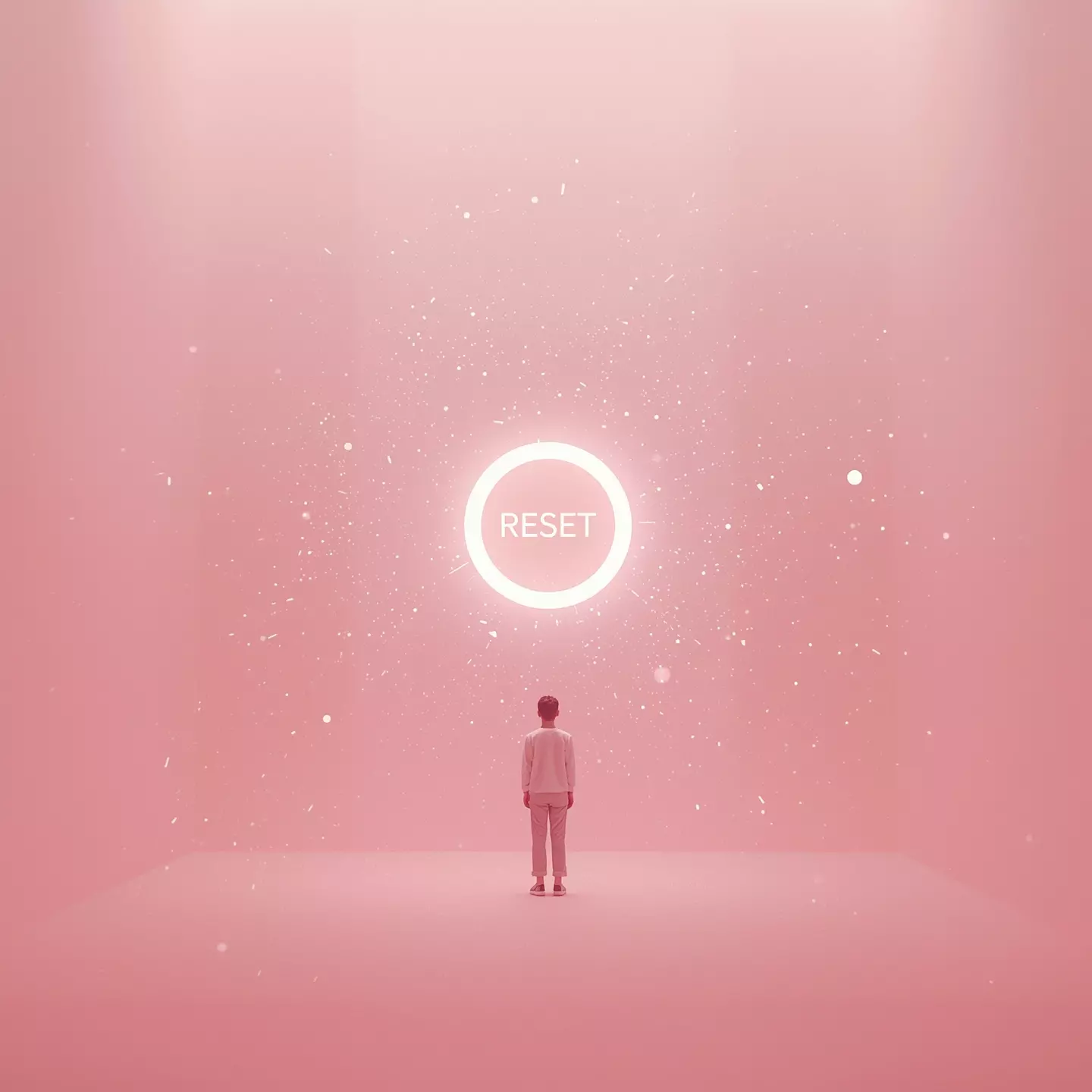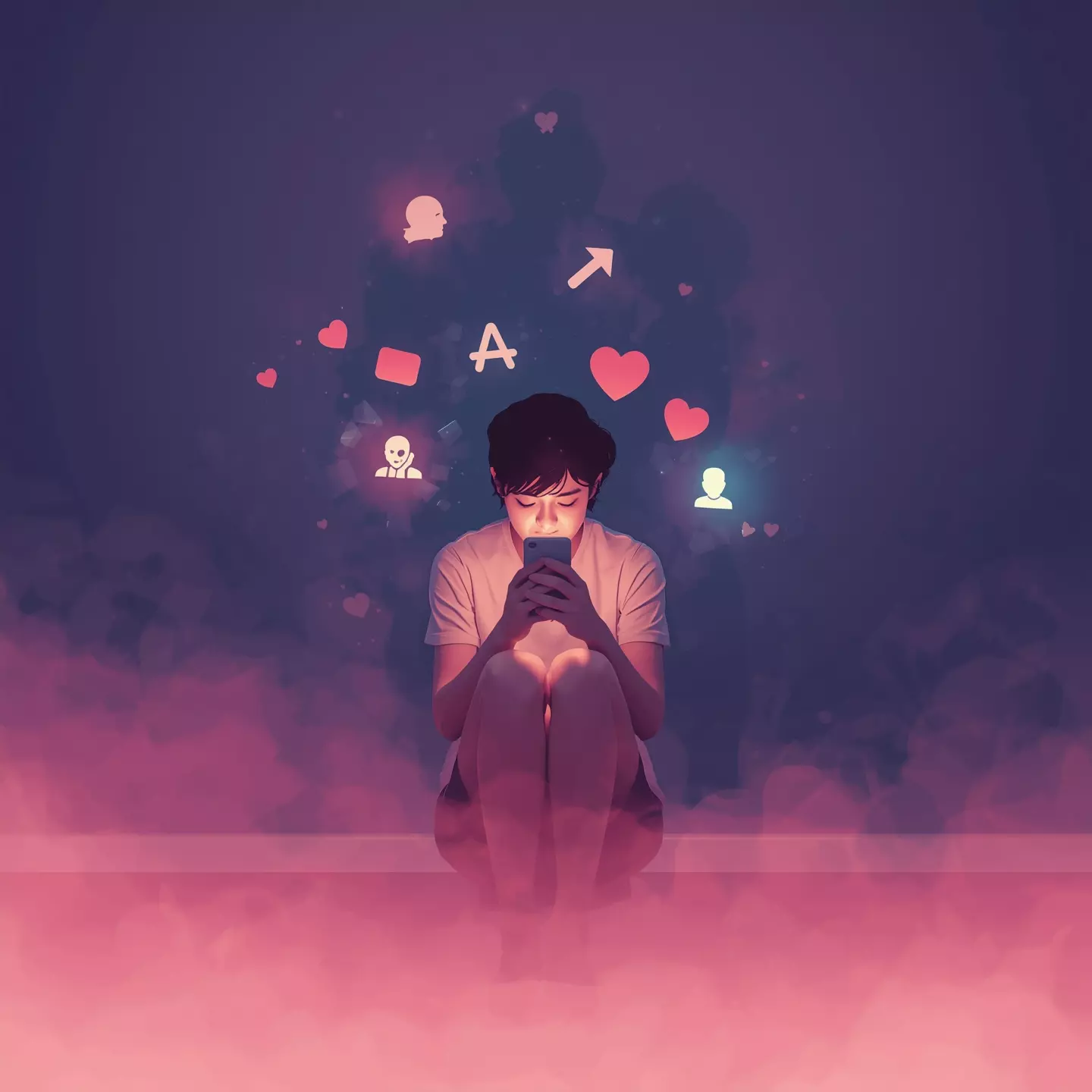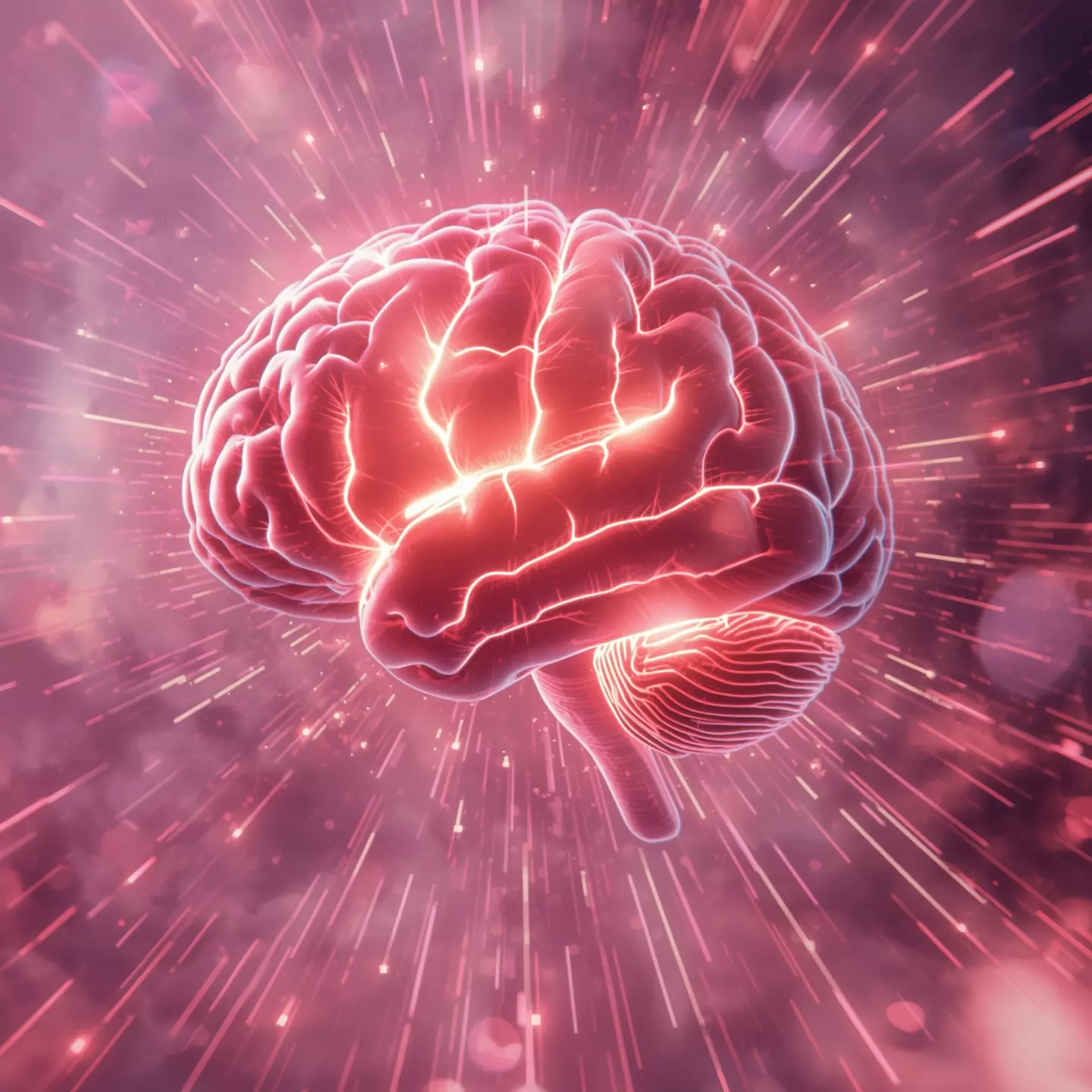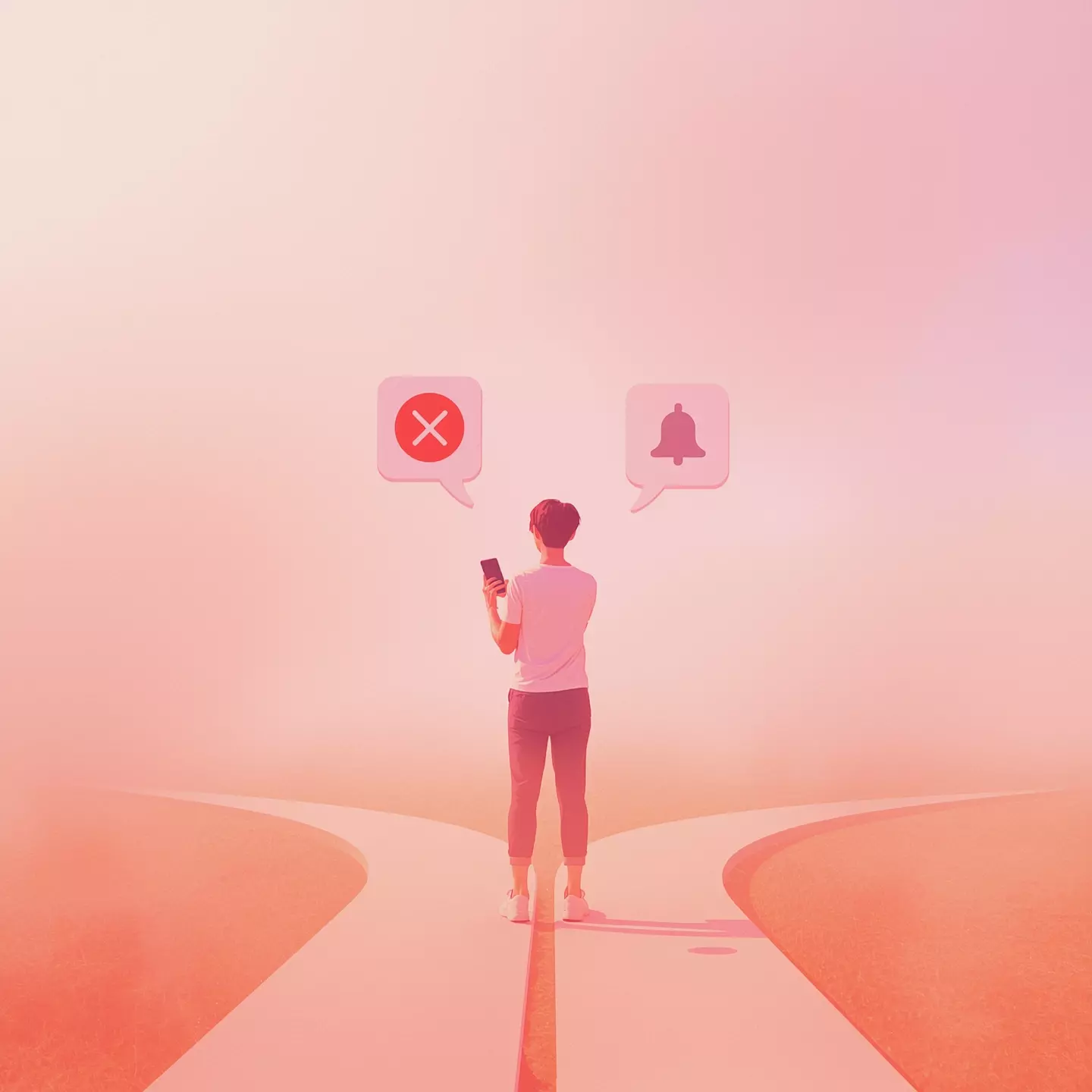Table of Contents
There’s a moment after a breakup where your heart feels both frantic and hollow—like it wants to scream and collapse at the same time. In that storm, the urge to say something to your ex, to explain yourself, to announce “I’m going no contact after breakup” can feel overwhelming.
You want them to know why. You want them to understand. But here’s the truth: you don’t need to tell them. In fact, telling them often does more harm than good.
Problem A: Should you tell your ex that you’re going no contact after breakup?

It feels like the fair thing to do, right? To explain, to justify, to leave no room for confusion. But announcing no contact actually keeps the connection alive.
- It’s an invitation for your ex to reply, argue, or pull you back into the same painful loop.
- Studies show even brief, casual contact with an ex is linked to heightened distress and delayed healing.
- Every exchange is like picking at a wound—it keeps it from closing.
Silence allows the break to be clean. It’s not about punishing them—it’s about protecting you.
Problem B: Isn’t explaining your decision necessary for closure?
Closure feels like something they should give you—but it isn’t. Research on breakups shows that well-being declines further when ex-partners maintain communication.
You think you’re chasing clarity, but what you’re really chasing is a reaction. And their reaction—whether it’s anger, guilt, or pleading—doesn’t bring peace.
Closure doesn’t arrive in their reply. It begins the moment you decide: I don’t need to explain. I just need to step away.

Coping with the First Month After a Breakup
Let’s examine coping with the first month after a breakup in: Shock, Panic & implosion, Managing Daily Overwhelm (Survival Mode), The No-Contact Gauntlet, Emotional Outbursts – Rage, Crying & “What Is Wrong With Me” Moments, Coping Alone vs Reaching Out and Your First Glimpse of Hope
Tap here to read more →Problem C: Won’t telling them prevent misunderstandings?

You might worry they’ll think you’re being petty or cruel if you disappear without explanation. But telling them only reopens the door to:
- Negotiation
- Guilt-tripping
- Manipulation
Research suggests that gestures like announcing no contact or rebounding are often ways of avoiding grief rather than facing it.
Healing isn’t about appearances—it’s about protection. Silence isn’t spite. It’s sanctuary.
Final Word
No contact after breakup doesn’t need to be declared. It’s not a message you send—it’s a boundary you build inward.
Like quietly closing a door, not with a slam but with intention, and turning toward the space that’s finally yours again. Healing doesn’t begin when they understand. It begins when you stop explaining.
FAQ
Q1. Should I tell my ex that I’m going no contact after breakup?
No. Telling them often keeps the emotional tie alive and invites them to respond, argue, or negotiate. The most effective no contact strategy is silent, because it prevents re-engagement and protects your healing.
Q2. Will my ex think I’m being rude if I don’t explain no contact?
They might—but your healing is not about their interpretation. Silence may feel harsh, but it sets a clear boundary without inviting manipulation or guilt-tripping.
Q3. Does no contact after breakup actually help you move on faster?
Yes. Studies show that staying in contact with an ex is linked to higher distress and slower recovery. By cutting ties completely, you allow your nervous system to stabilize and create space for true emotional healing.
Q4. How long should no contact after breakup last?
There’s no fixed rule, but most experts recommend at least 30–60 days with zero communication. This break allows enough time for your emotions to settle and for you to start rebuilding independence without your ex’s influence.
Scientific Sources
-
KL O’Hara et al. (2020): Contact with an ex-partner is associated with separation-related psychological distress
Key Finding: Observed in-person contact with an ex-partner after breakup is significantly associated with heightened psychological distress during separation.
Why Relevant: Demonstrates that initiating or continuing contact—even just physically—can exacerbate emotional pain during the critical early stage of healing.
https://www.ncbi.nlm.nih.gov/pmc/articles/PMC7709927/ -
GK Rhoades et al. (2011): Breaking Up is Hard to do: The Impact of Unmarried Break-up on Psychological Distress and Life Satisfaction
Key Finding: Among 1,295 unmarried adults, breakups led to a small but notable increase in psychological distress (d = .24) and decline in life satisfaction; continued contact with an ex also tended to exacerbate declines in life satisfaction.
Why Relevant: Highlights how emotional well-being dips post-breakup—and that maintaining contact with an ex can impede recovery.
https://www.ncbi.nlm.nih.gov/pmc/articles/PMC3115386/ -
Cassie Shimek & Richard Bello (2014): Coping with Break-Ups: Rebound Relationships and Gender Socialization
Key Finding: In a sample of 201 participants, men were more likely to engage in rebound relationships shortly after breakups—typically around six weeks later—as a distraction from emotional attachment—not as a path toward healing.
Why Relevant: Suggests that instead of genuine emotional resolution, actions like initiating contact or rebound relationships may serve as avoidance—not healing—and thus hinder true emotional recovery.
https://www.mdpi.com/2076-0760/3/1/24
- No Contact After Breakup: Why You Shouldn’t Tell Them (Powerful Truth)

- Break Free from the No Contact Relapse Loop: Powerful Steps to Heal Without Shame

- Digital Self-Harm: The Painful Truth About Social Media Stalking After a Breakup

- The Dopamine Trap: Breaking Free From Cravings After a Breakup

- Ex Watching Your Stories? The Powerful Truth You Need to Heal

- Should I Block My Ex? Powerful Breakup Strategy for Healing Fast

- The “Just One Text” Lie: Why No Contact After Breakup Heals Faster

- No Contact Day 3, Day 7, Day 14: Powerful Insights to Heal Faster

- The No Contact Rule Explained: Why This Proven Breakup Strategy Truly Works

























